Learn how to sew a slipcover for a wingback chair with this step by step video tutorial.
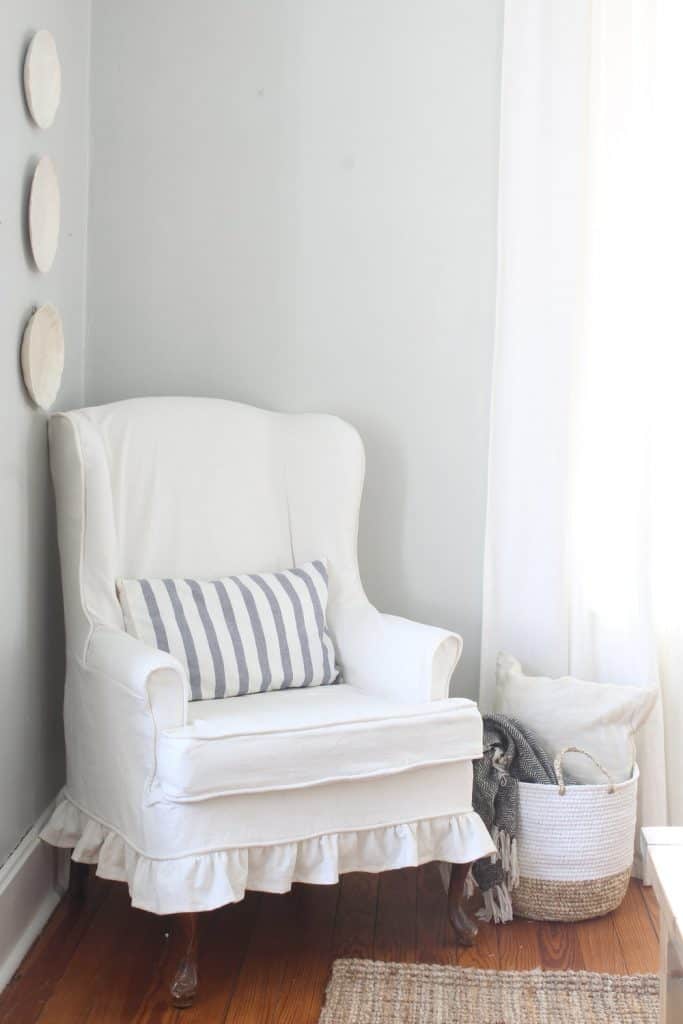
This post contains affiliate links for your shopping convenience. See my full disclosure HERE.
A Challenging Project
I have been sewing simple things for years now; dresses for my little girls, pillows, curtains, throw blankets and even simple slipcovers for our living room couches.
But, I must admit, this project challenged me.
This project was hard, but with patience and perseverance (and a few choice words) totally doable!
How to Slipcover a Wingback Chair Supplies
For this slipcover I used painter’s drop cloth that I bleached, a process I described in this post.
The drop cloth I use can be found HERE.
UPDATE MUST READ: I have heard from several readers that the brand of drop cloth you buy makes all the difference. I did not know this, since I have only ever used this brand from Amazon. Other brands turns gray and off white.
UPDATE PART TWO: Thanks to Lori, a lovely reader of my blog, I now know why some other brands won’t turn white. The drop cloths I recommend from Amazon are 100% cotton, so bleachable. Some brands are made with 50% polyester, so unbleachable. I knew people were having trouble with other brands, but now I actually know why!
Slipcovering is more about the process than an actual step by step tutorial.
To slipcover anything you just need to follow these rules
1. Follow the original seams and lines of the chair/couch/love seat
2. If you are adding piping, use the original chair as your guide. Put it in all the places that the original maker of the chair put it.
3. Pin the fabric tightly to the chair
4. Use a lot of pins and sew often.
This is not a quick process. You will want your chair near your sewing machine, so you can continually go back and forth to make sure everything is fitting okay.
You never want to pin and sew several seams at one time.
Always pin a little, sew it, and return to the chair to pin a little more.
Taking care to go slowly will ensure an excellent fit!
How To Slip Cover a Wingback Chair Instructions
To begin, I made enough piping to get me through the whole project.
To do this, I sandwiched 6/32″ cotton cord inside a four inch strip of bleached drop cloth.
I used a zipper foot to get the needle as close to the cord as possible, without sewing over it.
Next, I cut and draped all the pieces over the chair. (This will make waaay more sense in the video.) I cut pieces for the outside and inside of the wing, two pieces for the back, two pieces for the arms, two pieces for the front of the arms, two outside lower pieces, a piece for the front apron and a large piece for the front chair back (if that makes any sense at all).
I totally guesstimated all the sizes of the pieces.
Nothing has to be exact. The exactness will come with the pinning and sewing. 🙂
I started by overlapping the two back pieces and pinning them (right sides together) to the chair back piece.
It is really important to keep the chair back piece smooth and tight. It will the most visible in the finished slipcover.
Following the lines and seams of the original chair, I pinned the outside wing pieces to the back and to the inside wing pieces, which I also pinned to the front of the chair piece.
Have I lost you? It will make sense in the video.
You can see how many pins I used in this process. I wanted to be sure they would follow the lines of the chair, ensuring a nice fit.
I made sure the pins created a line for me to sew along.
While slipcovering I stop several times to be sure everything is still fitting.
Sometimes things may appear a bit wonky but might actually turn out when you pull it taut at another seam.
And remember that mine looked like it wasn’t going well halfway through, but turned out totally fine!
I could tell that I wasn’t going to have quite enough bleached drop cloth to finish my project, so I used unbleached drop cloth for the portion that would be hidden underneath the cushion.
Notice in the photo below how all the seams of my slipcover are along the original seams of the chair.
Use the piece as your guide.
This will allow you to slipcover anything.
After the main portion of the slipcover was finished, I added a ruffle and piping to the bottom edge to finish it off.
For the cushion, I created an envelope style cover, as opposed to using a zipper.
To make the pattern, I traced the shape of the cushion onto the drop cloth, leaving about a half inch on all sides for seam allowance.
For the bottom part of the cushion I cut two pieces that would overlap each ther for the cushion to fit inside.
I also cut a long strip that would go around the center of the cushion to join together the top and bottom pieces, with piping sandwiched between.
If you are on the fence about trying this, I encourage you to do it! As long as you go slow and check the fit often, you can totally do this.
You will be so proud of yourself for tackling the slipcover. 😉
You got this!
How to Sew a Slipcover for a Wingback Chair
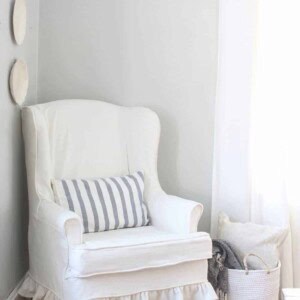
Equipment
- Sewing machine
Ingredients
- 100% cotton drop cloth
- sewing pins
Instructions
- For this slipcover I used painter’s drop cloth that I bleached (a process you can find on my blog!)
- This is not a quick process. You will want your chair near your sewing machine, so you can continually go back and forth to make sure everything is fitting okay. You never want to pin and sew several seams at one time. Always pin a little, sew it, and return to the chair to pin a little more. Taking care to go slowly will ensure an excellent fit!
- To begin, I made enough piping to get me through the whole project.
- To do this, I sandwiched 6/32″ cotton cord inside a four inch strip of bleached drop cloth. I used a zipper foot to get the needle as close to the cord as possible, without sewing over it.
- Next, I cut and draped all the pieces over the chair. (This will make waaay more sense in the video.) I cut pieces for the outside and inside of the wing, two pieces for the back, two pieces for the arms, two pieces for the front of the arms, two outside lower pieces, a piece for the front apron and a large piece for the front chair back (if that makes any sense at all).
- I totally guesstimated all the sizes of the pieces. Nothing has to be exact. The exactness will come with the pinning and sewing. I started by overlapping the two back pieces and pinning them (right sides together) to the chair back piece.It is really important to keep the chair back piece smooth and tight. It will the most visible in the finished slipcover.
- Following the lines and seams of the original chair, I pinned the outside wing pieces to the back and to the inside wing pieces, which I also pinned to the front of the chair piece.
Have I lost you? It will make sense in the video. - You can see how many pins I used in this process. I wanted to be sure they would follow the lines of the chair, ensuring a nice fit.
I made sure the pins created a line for me to sew along. - While slipcovering I stop several times to be sure everything is still fitting.Sometimes things may appear a bit wonky but might actually turn out when you pull it taut at another seam. And remember that mine looked like it wasn’t going well halfway through, but turned out totally fine!
- I could tell that I wasn’t going to have quite enough bleached drop cloth to finish my project, so I used unbleached drop cloth for the portion that would be hidden underneath the cushion. Notice in the photo below how all the seams of my slipcover are along the original seams of the chair. Use the piece as your guide. This will allow you to slipcover anything.
- After the main portion of the slipcover was finished, I added a ruffle and piping to the bottom edge to finish it off.
- For the cushion, I created an envelope style cover, as opposed to using a zipper. To make the pattern, I traced the shape of the cushion onto the drop cloth, leaving about a half inch on all sides for seam allowance. For the bottom part of the cushion I cut two pieces that would overlap each other for the cushion to fit inside.
- I also cut a long strip that would go around the center of the cushion to join together the top and bottom pieces, with piping sandwiched between. If you are on the fence about trying this, I encourage you to do it! As long as you go slow and check the fit often, you can totally do this.
Notes
- Follow the original seams and lines of the chair/couch/love seat
- If you are adding piping, use the original chair as your guide. Put it in all the places that the original maker of the chair put it.
- Pin the fabric tightly to the chair
- Use a lot of pins and sew often.
Nutrition information is automatically calculated, so should only be used as an approximation.
Pin it for later
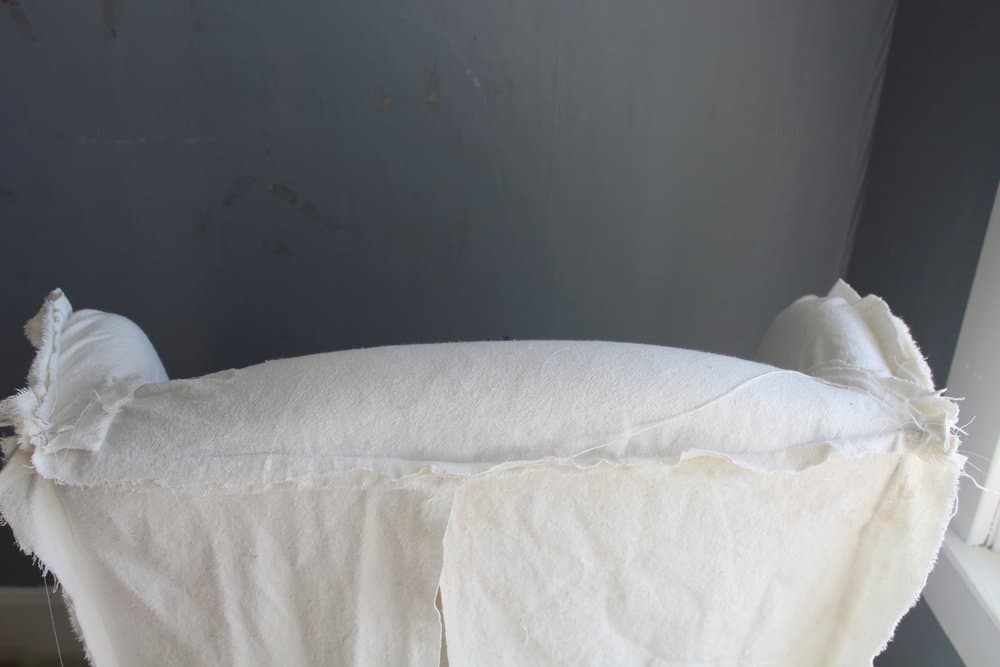
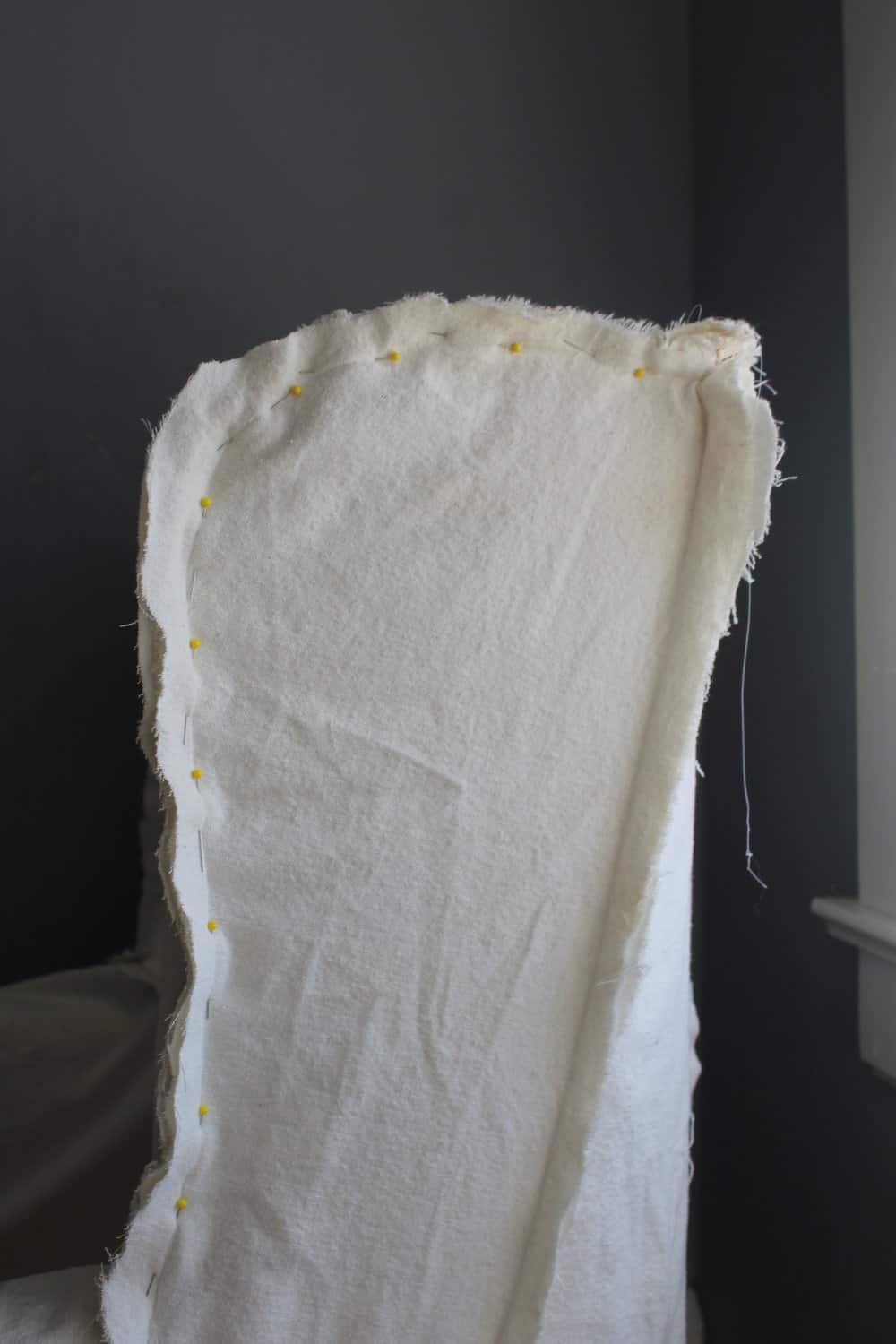
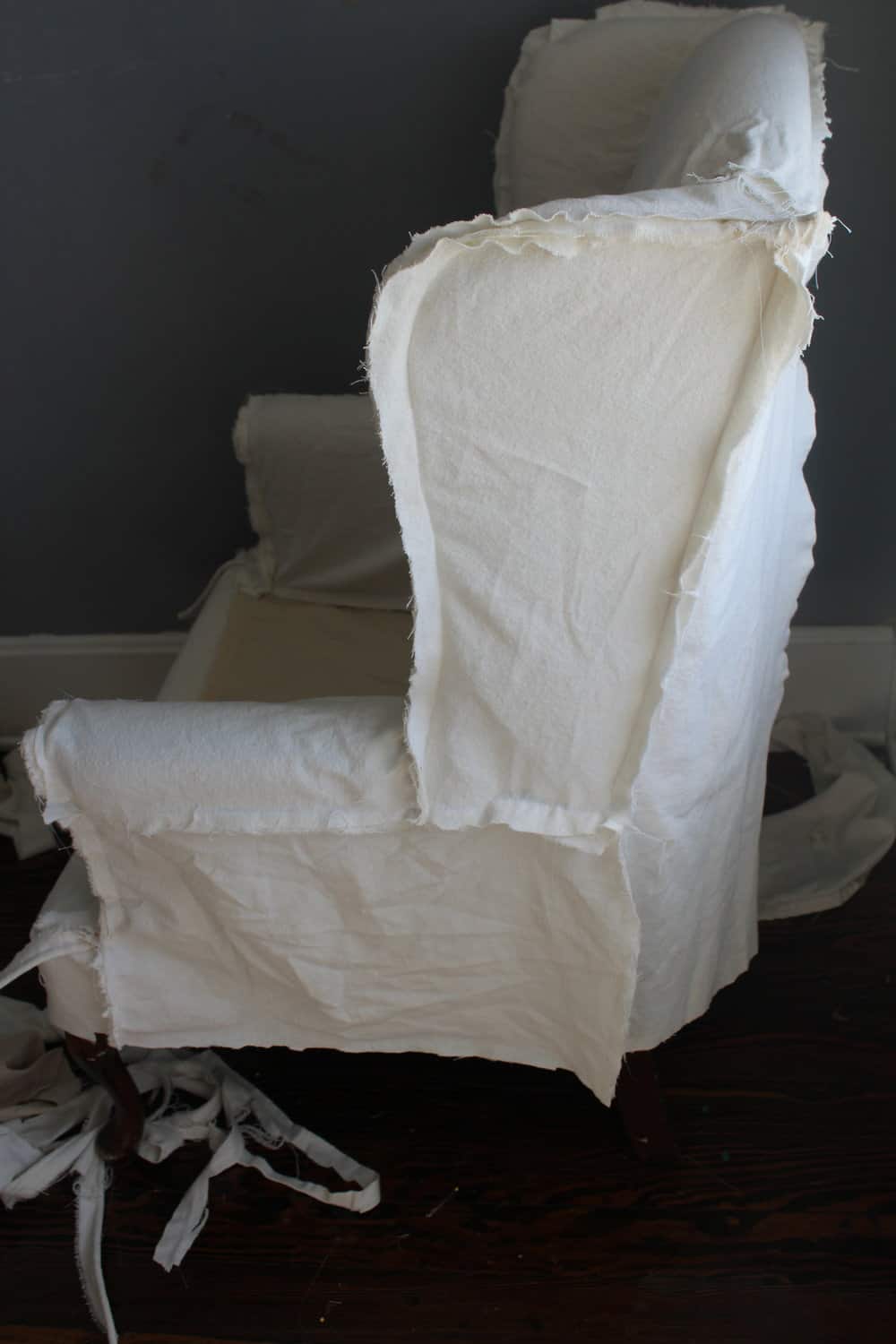
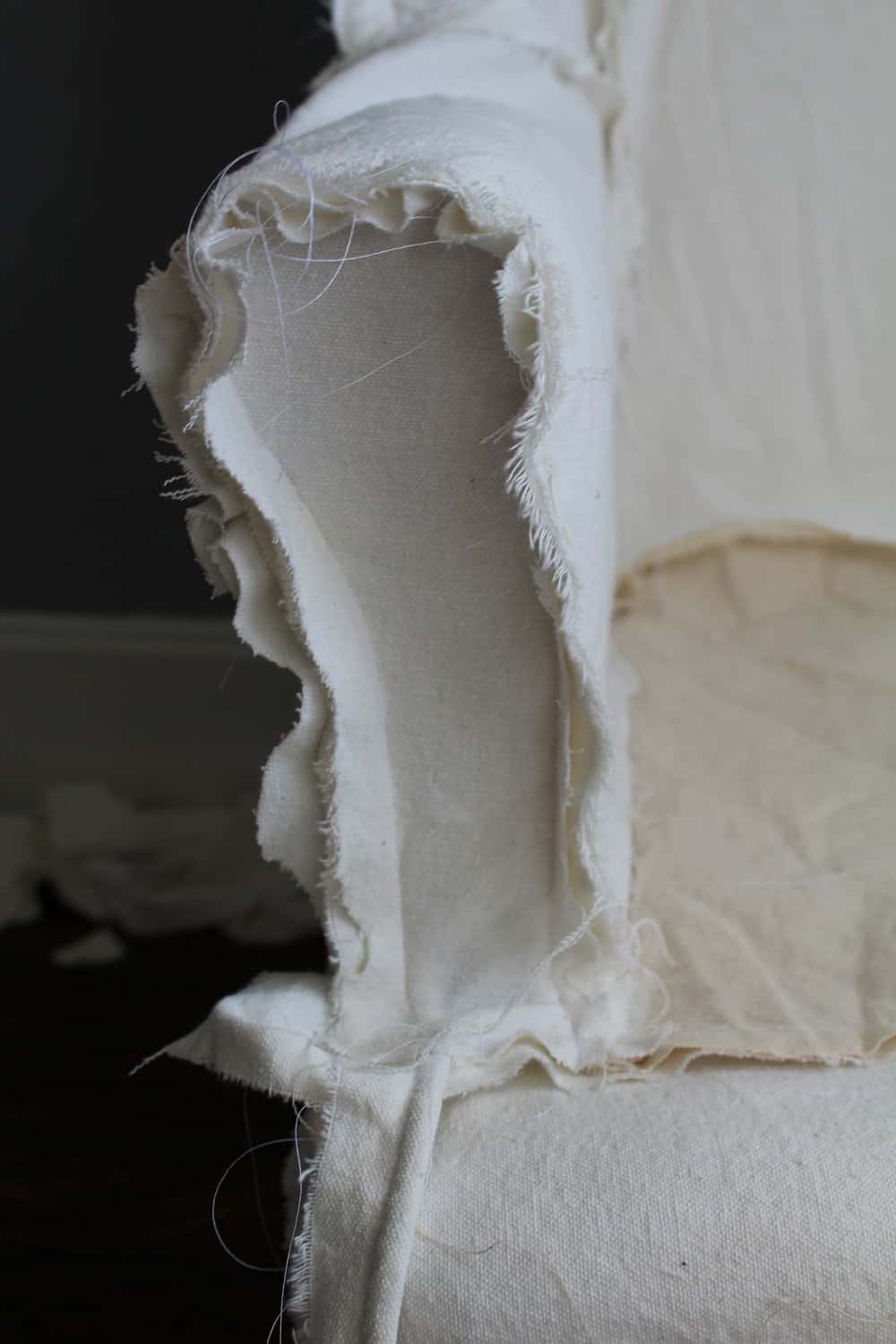
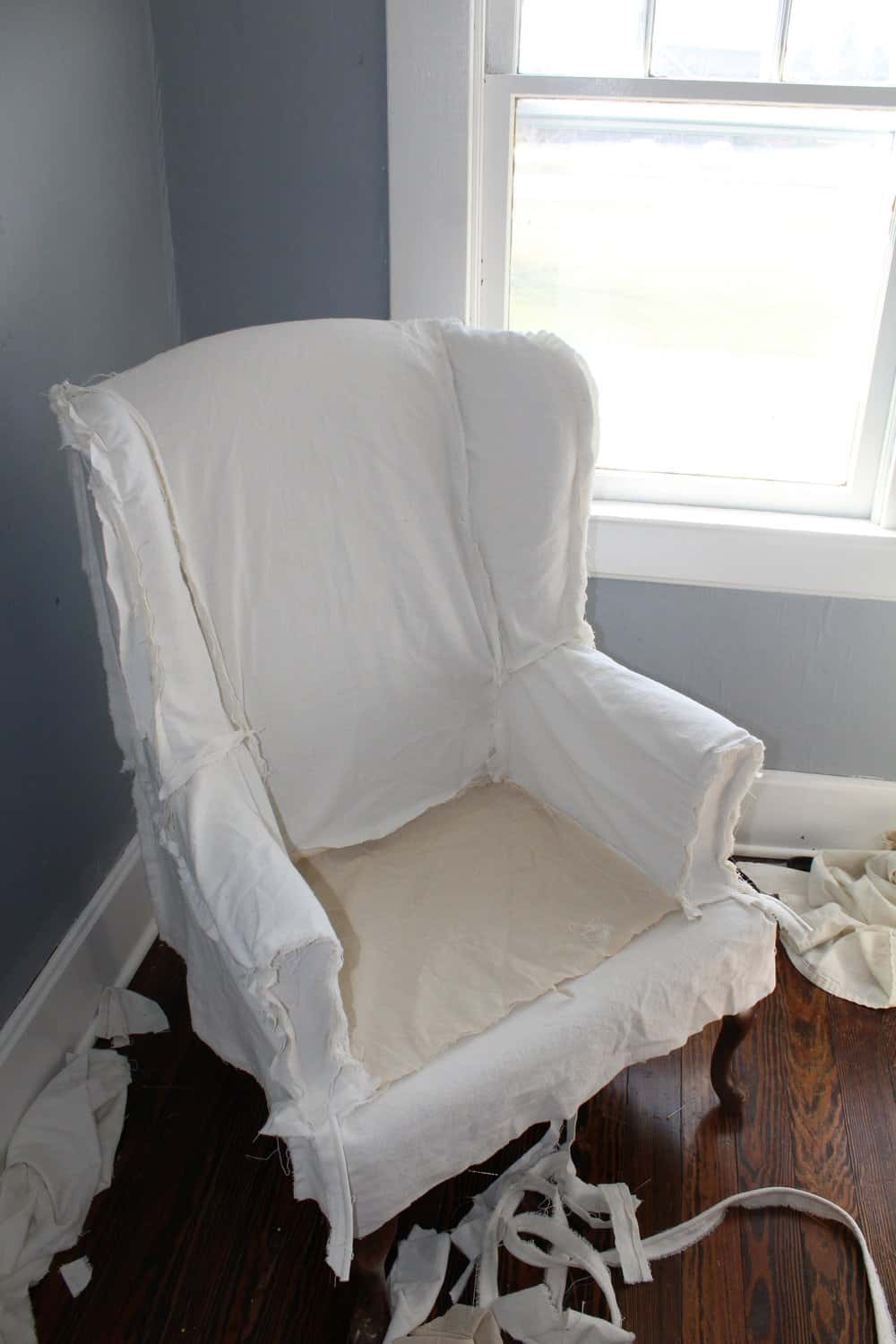
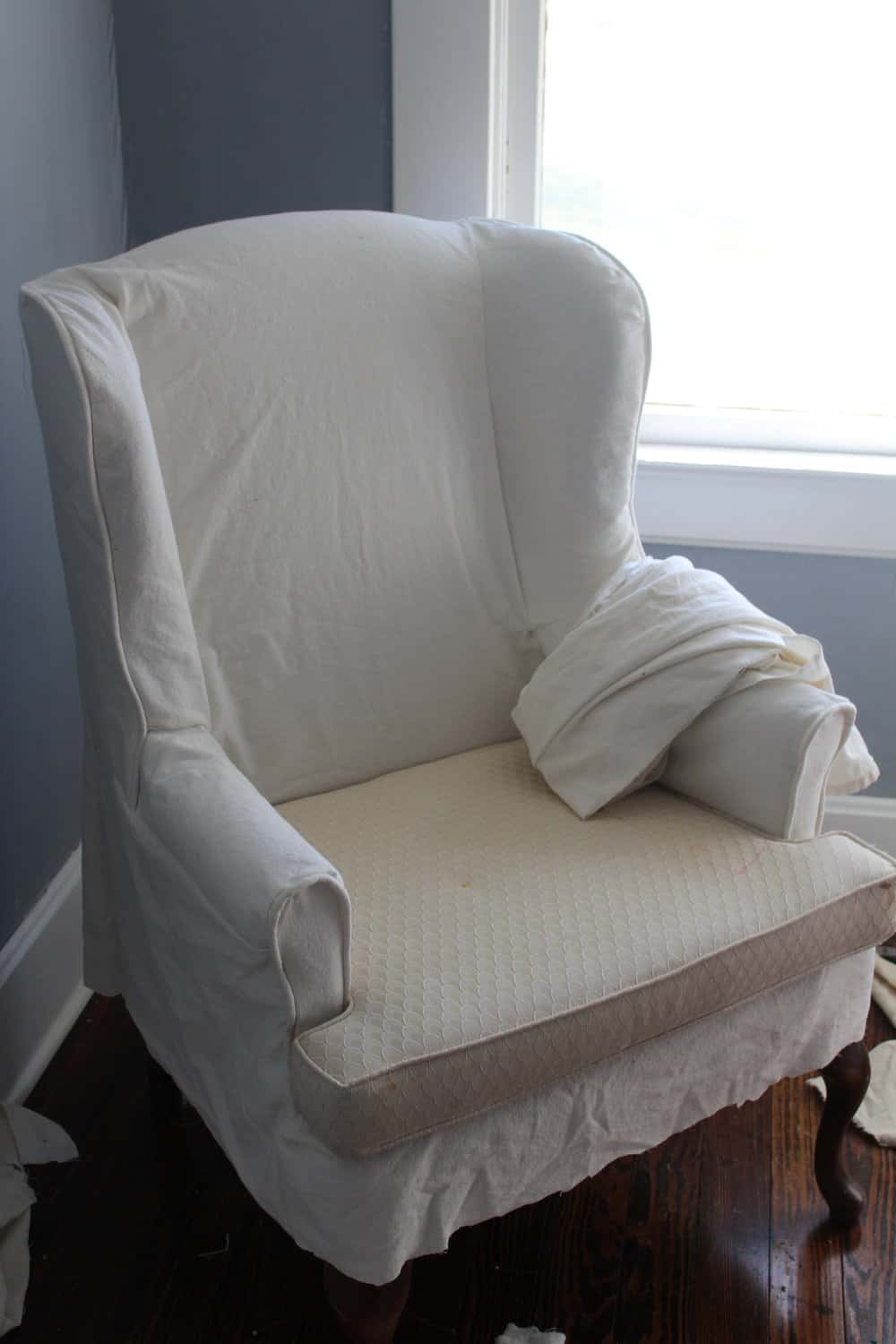
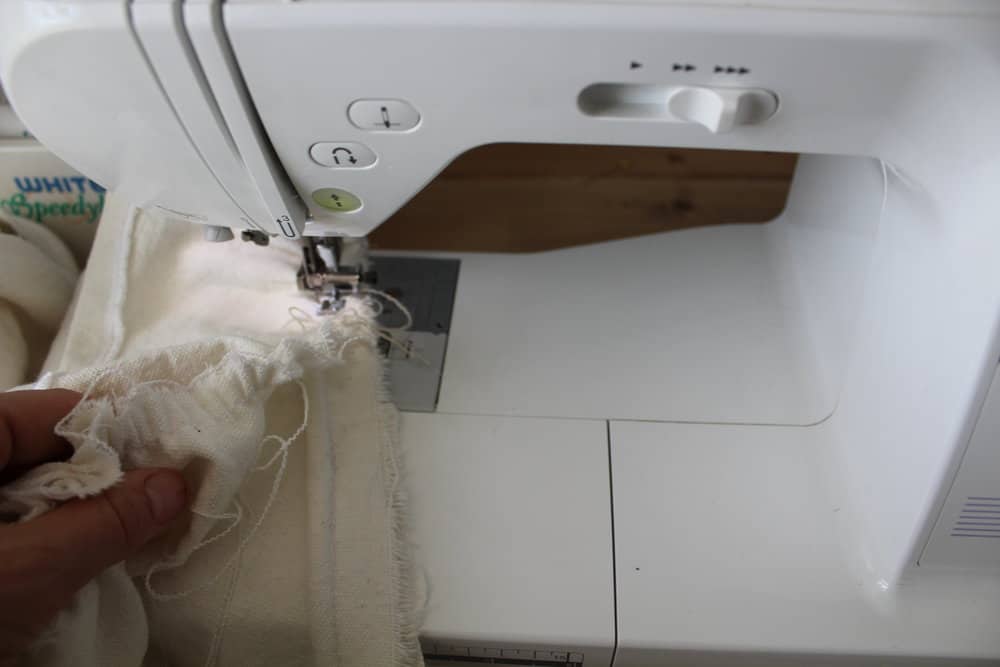
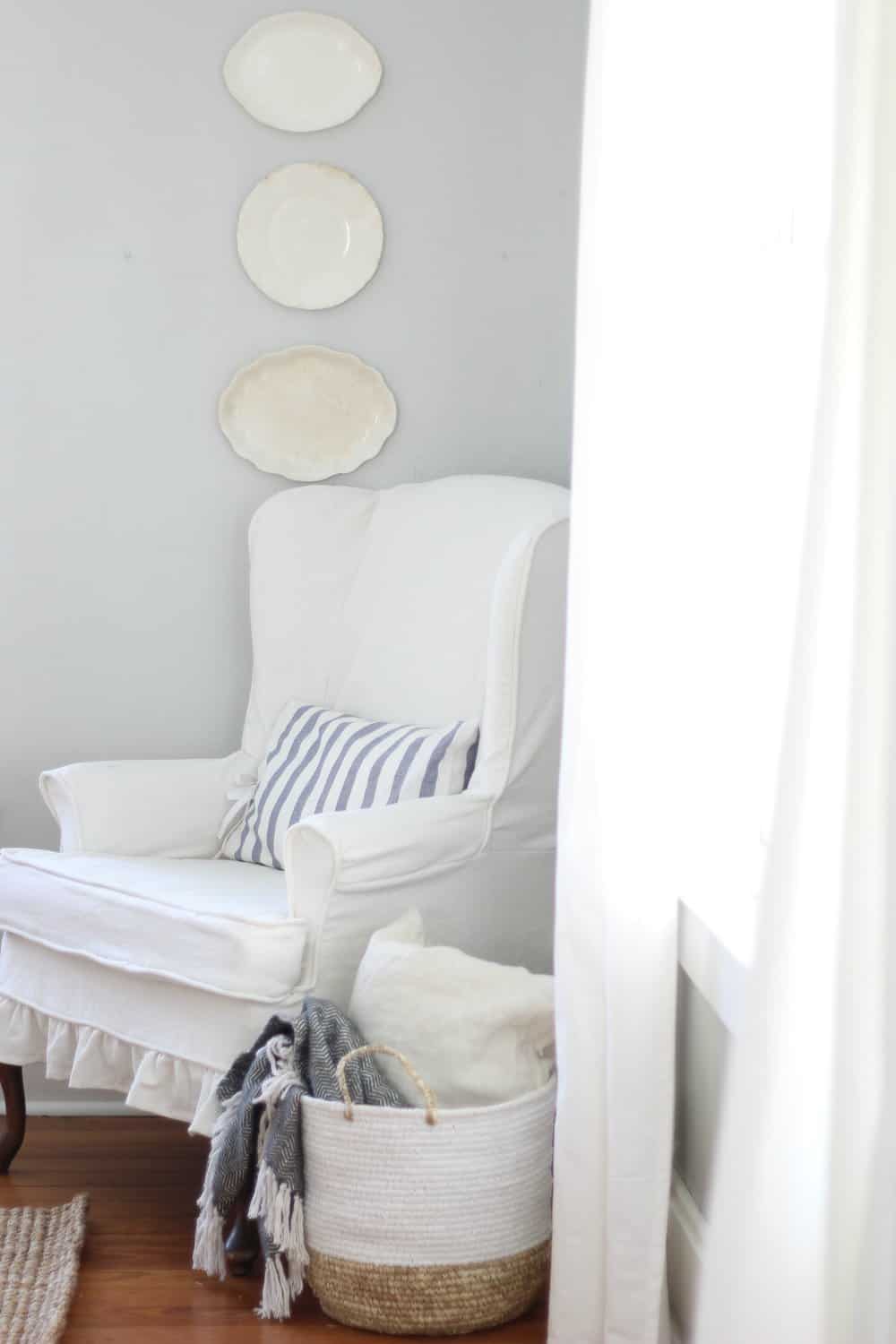
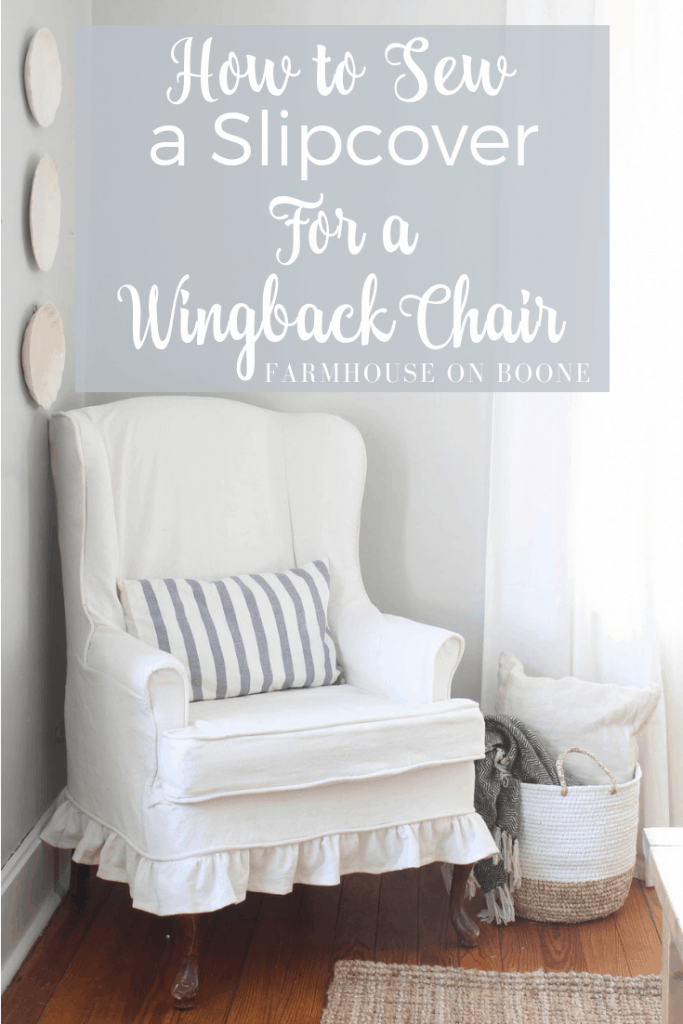
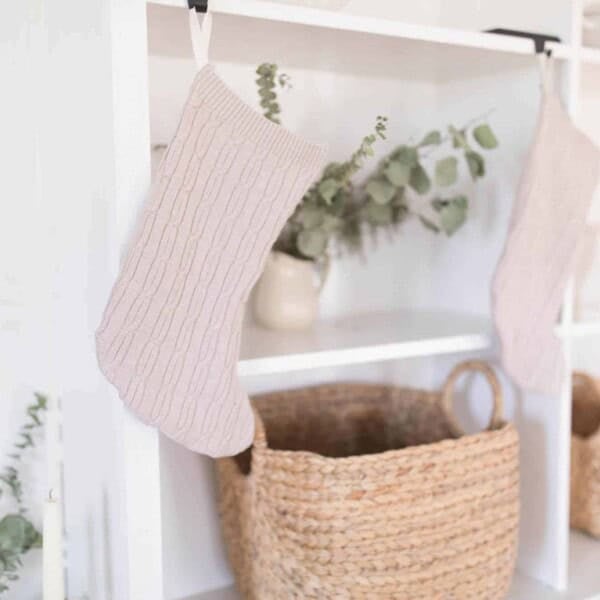


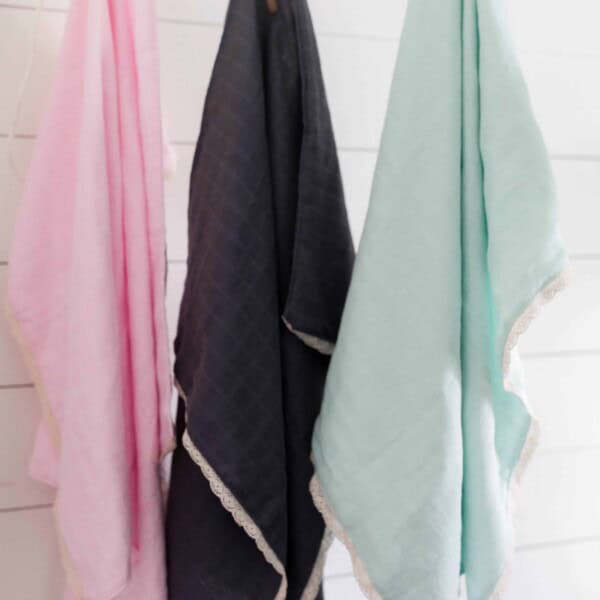






Hi! I’m trying to decide if a sip cover would be durable enough for a house full of little (and big) kids..how to do you feel like your chairs have held up? Thank you!
Several years later and we still have them! They’ve held up great!
Hi Lisa, I would like to make a slipcover for my sofa, do you have instructions for that? Or would I use the same guidelines for the wing back chair?
I have been following you for awhile. Love your style of life!
You just use the same exact process, no matter the shape/size!
Hi Lori,
When Lisa mentions a link to something such as a video I think she is referring to you-tube. She often says she will link something in the comments below, but then there are no corresponding links to be found. I came to the conclusion she is cross-posting these videos to a you-tube channel and that’s where the links are located. Maybe we need to locate her you-tube channel and follow her on there so we can access links.
-Marla
Lisa, you mentioned you were going to apply ties to the back of the chair. Did you do that or did you change your mind? Also, I love using the envelope method for pillows but on slipcover pieces what’s the average amount you overlap on the back AND your cushion? That idea was brilliant and I’m doing it now but struggling with that particular issue. I’d love to hear back so I can continue sewing before I make a mistake. I’m using denim fabric and out of fabric! Dang!
Hey Lisa,
I just love your videos and style!! I’m completely hooked lol!! Your book is beautiful as well and I cannot wait until you have one out with your yummy recipes!
One day I was really pondering how to get affordable slipcovers for our 2 wingback chairs, and I came across your channel and this video. It was a good sign and just one of those little things God puts in our lives! 😉 my winged back chairs are in beautiful condition and well made. They were my Beba’s (Grandma’s). However, they are a very light pink and also recline. So I need to figure out how to make a slipcover that will “give” a little when reclined. Anyway, thank you for this! I know you have had your couch slipcovered for a long time. I’m just curious how you worked/sewed it to slip on and off. Does that make sense? Probably not lol. Too difficult to describe on here. God Bless and thanks again!!
These are such great tips! Thank you for this post. You make it look so easy.
You mentioned a video, in fact you mentioned it twice in your article~ but where’s the link to the video?
Could you provide a link to the video? thanks so much
Thanks so much for making your video! I found it very helpful and such a good visual aid in making slip covers for the first time. I have been sewing for many years, but I must say this was the most difficult thing I have done. I couldn’t have done it without the aid of your blog post and tutorial.
You need your own show. I love redoing furniture and can’t wait to try a slip cover. I have been sewing since I was about 7. So over 50 years. You have such a great talent and I hope to see more of your blogs.
Hi, I love your tutorial. You are excellent in explaining all the steps. You make slipcovers look easy to acomplish, and now I feel brave to tackle. So thank you so much.
Hi Lisa,
Update. I used your Amazon link to purchase my drop-cloth and followed your instructions. I ripped the piece in half down the seam. I filled my top loader machine using the extra large capacity with the hottest setting. Once filled, I added about a half a gallon of bleach and then the drop-cloth. I agitated it every so often and let it soak for about 7-8 hours. Since it was time, I pulled the knob and let if finish the cycle, but when I pulled it out to dry it, it was only white in some areas but still mostly beige. I read some of responses from other posts and it seems that this has happened to someone else so I’m not too worried. I see that you told her it was okay to do the process over again to the same piece, so that’s what I’m going to do. If it doesn’t come out completely white again, should I keep trying?
Thank you for all your help.
Diane